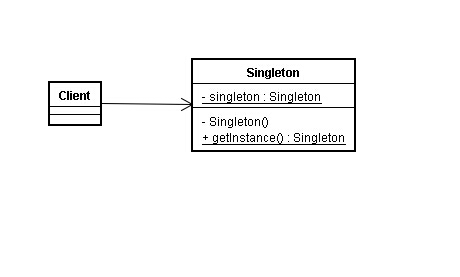确保一个类只有一个实例的模式成为单例模式。
单例模式的优点:
1.减少内存开支,降低系统性能消耗
2.避免对资源的多重操作,确保只有一个类实例进行动作
缺点:
1. 没有抽象,没有接口,无法被扩展
2. 并行开发,测试不方便,只有能单例模式开发完毕才能对类进行测试
标准类图:

一、标准的单例模式(预先实例化,项目当推荐使用此模式)
public class Singleton {
private static Singleton singleton = new Singleton();
private Singleton(){
}
public Singleton getInstance(){
return singleton;
}
}
二、延迟实例化的双锁单例模式(线程安全,但项目中不建议使用,因为可读性不好,也较复杂)
public class SingletonLazy {
private static SingletonLazy singleton = null;
private SingletonLazy(){
}
public SingletonLazy getInstance(){
if(singleton == null){
synchronized (SingletonLazy.class) {
if(singleton == null){
singleton = new SingletonLazy();
}
}
}
return singleton;
}
}
三、单例模式的扩展,只产生限定数量的多例模式
public class SingletonEx {
private static final Integer MAX_INSTANCE_COUNT = 2;
private static List<SingletonEx> instances = new ArrayList<>();
static {
instances.add(new SingletonEx());
instances.add(new SingletonEx());
}
private SingletonEx(){
}
public SingletonEx getInstance(){
Random random = new Random();
return instances.get(random.nextInt(MAX_INSTANCE_COUNT));
}
}








 本文深入探讨了单例模式的定义、优点、标准实现方式及优化策略,并通过实例展示了如何在不同场景下灵活运用单例模式来提高系统效率。
本文深入探讨了单例模式的定义、优点、标准实现方式及优化策略,并通过实例展示了如何在不同场景下灵活运用单例模式来提高系统效率。
















 1774
1774

 被折叠的 条评论
为什么被折叠?
被折叠的 条评论
为什么被折叠?








